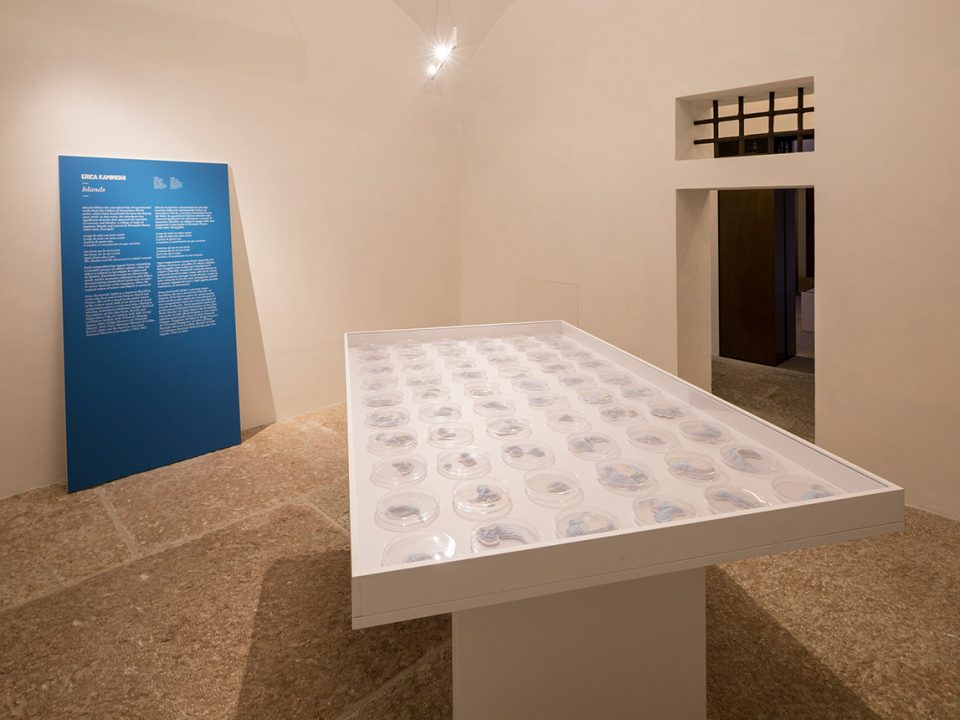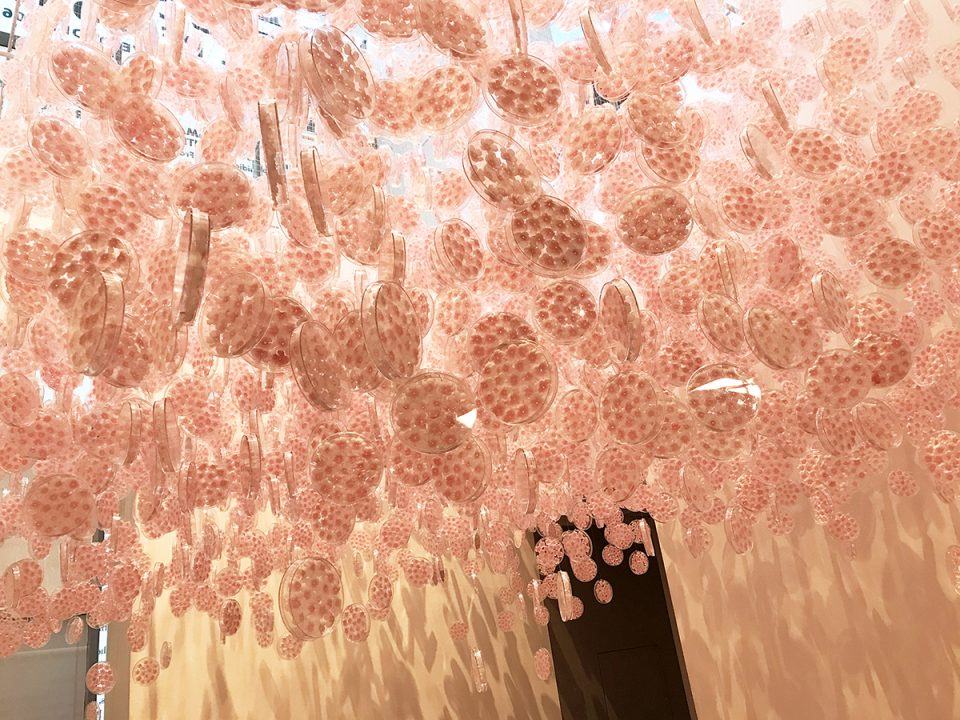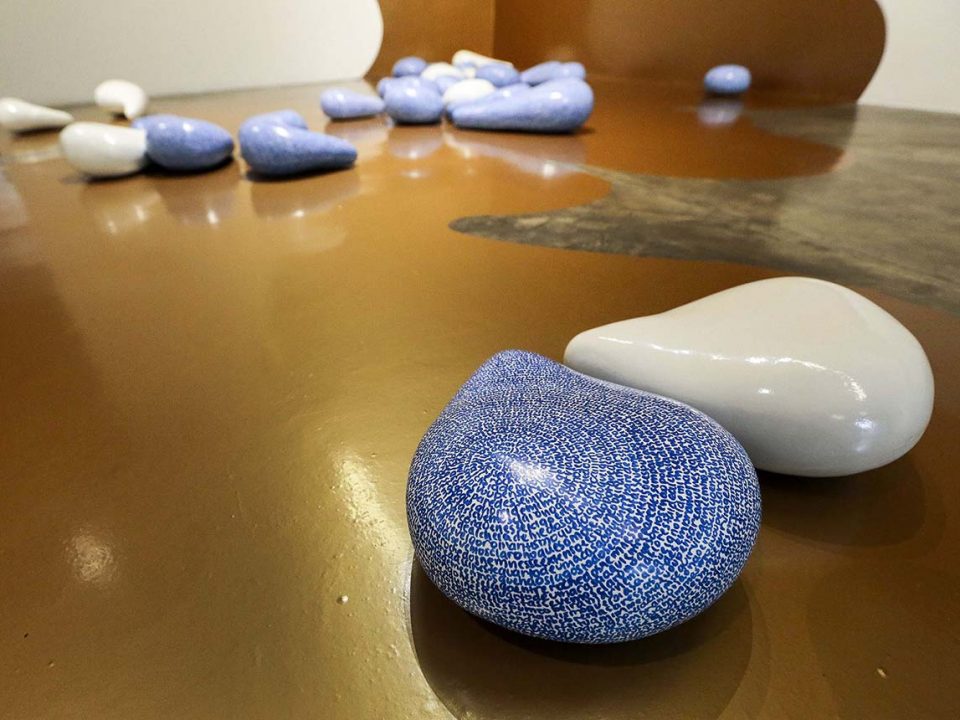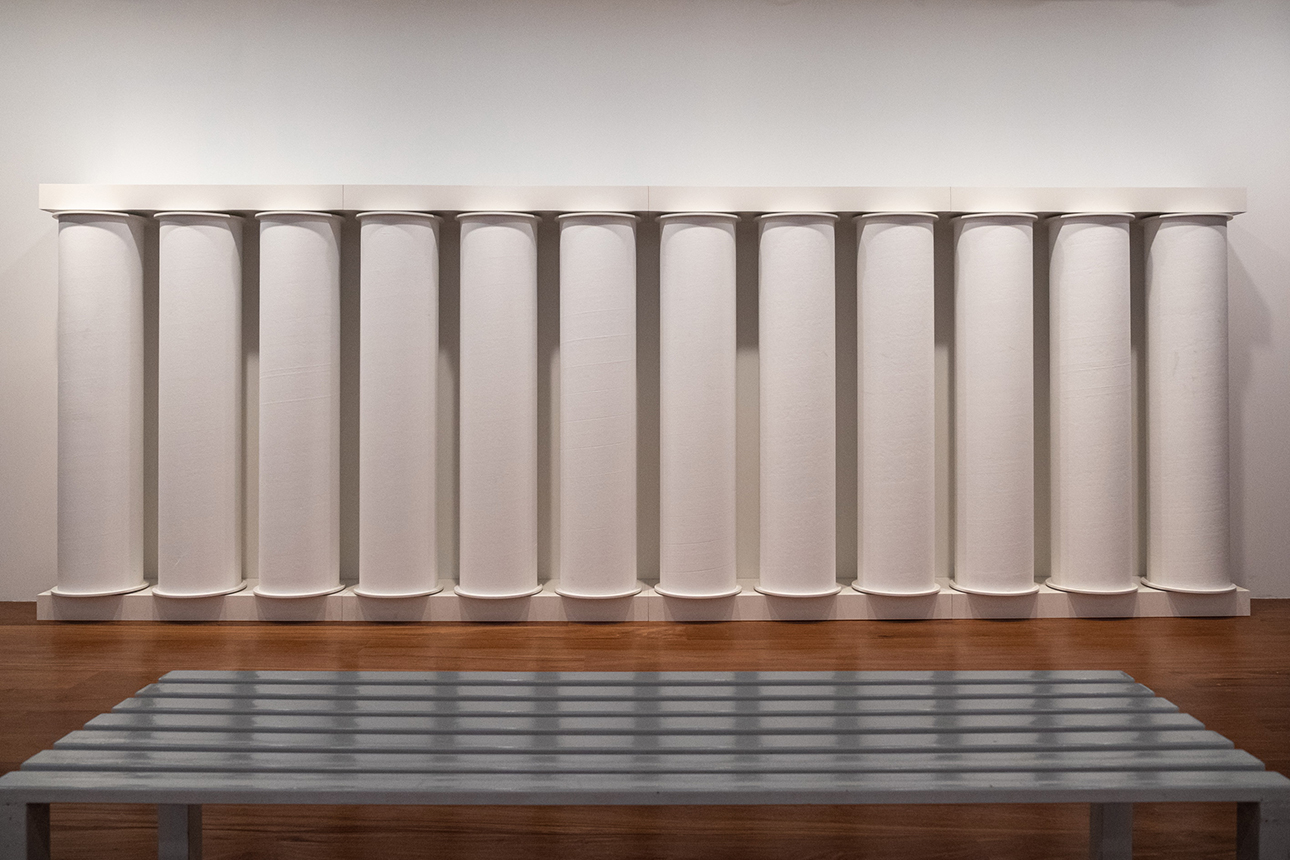
LOOP
Approx. 175 x 450 x 35 cm
Mixed Media: cardboard tubes, MDF and acrylic paint
Exhibition New Effervescence - Porto Seguro Cultural Space, Sao Paulo, Brazil - 2019
Photo Fabio Furtado
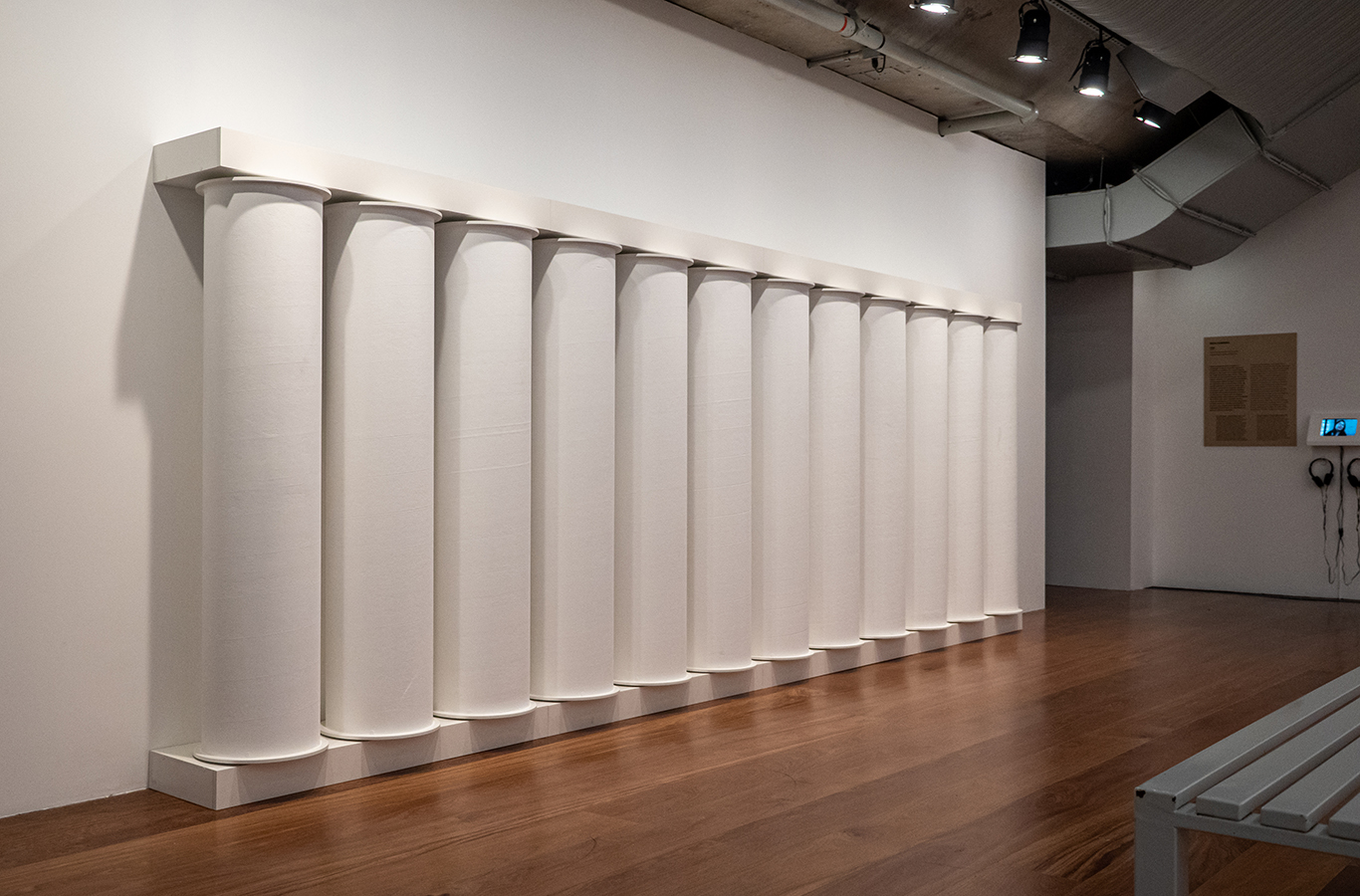
LOOP
Approx. 175 x 450 x 35 cm
Mixed Media: cardboard tubes, MDF and acrylic paint
Exhibition New Effervescence - Porto Seguro Cultural Space, Sao Paulo, Brazil - 2019
Photo Fabio Furtado
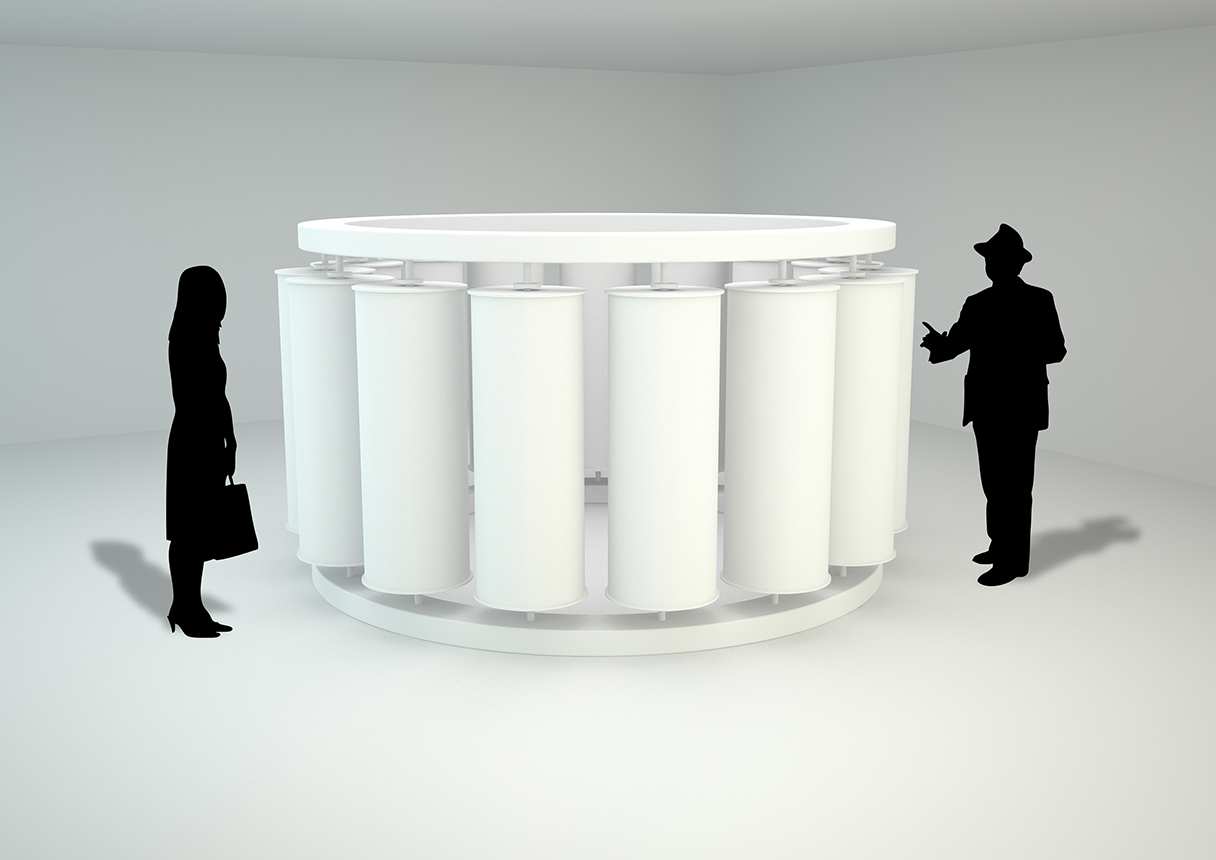
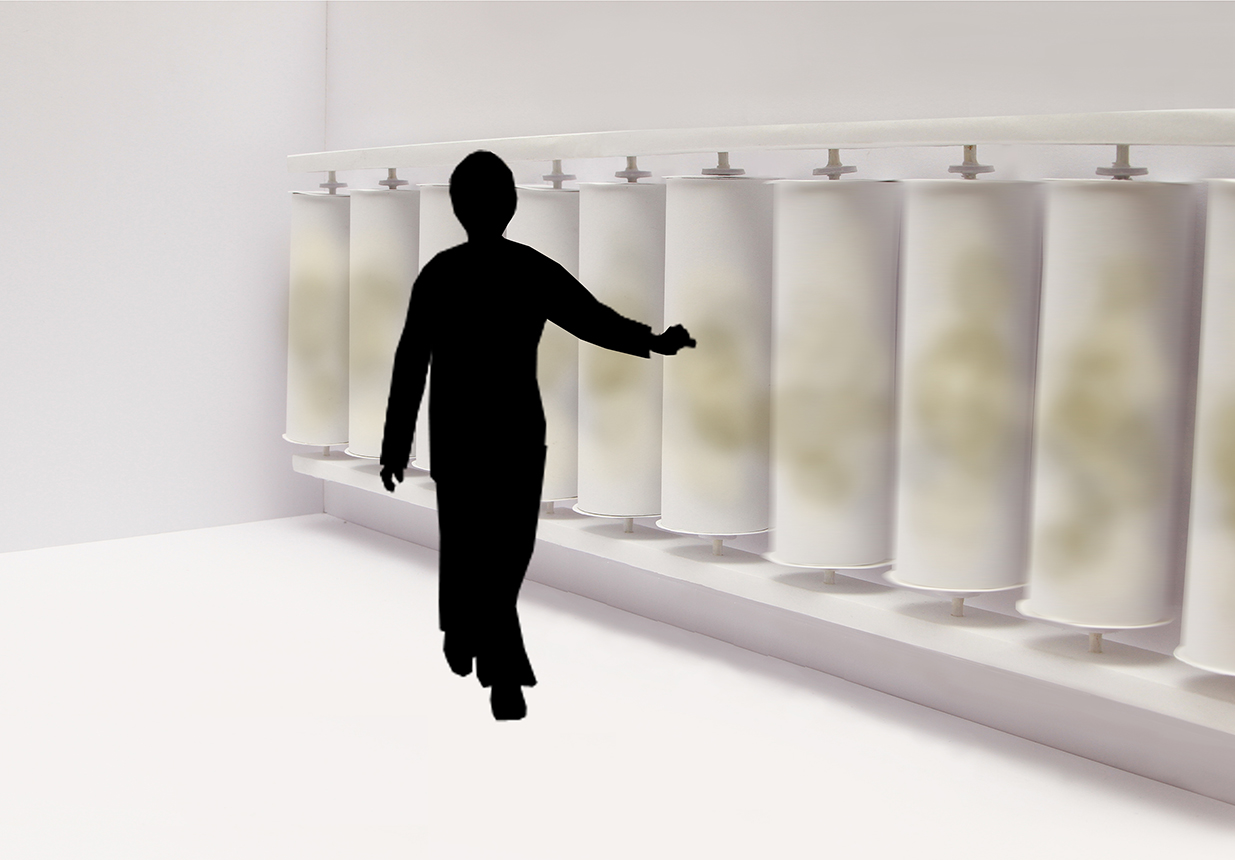
LOOP
Mockups of the project
LOOP
"In this visual installation, the public is invited to intervene by touching and rotating the cylinders coated with white Canson paper. The work plays with the double meaning of the English term “loop”: a shape, order or path of movement that is circular or twisted in itself, and the basic pattern of human fingerprint. The set of cylinders allude to the traditional Buddhist prayer wheels and while addressing the untouchable and the sacred, discusses the culture of touch. As they are touched, the three-dimensional pieces gradually change color and absorb the traces left by the spectators. In the conception of the artist, for whom the public often see only the superficial layer of beauty, this is a more direct and extreme artwork, discussing issues such as alterity and strangeness, as well as the association of white to beauty and purity." Curatorial text (Exhibition New Effervescence)
"What is the color of our touch?
When we touch a body, whether it is alive or inanimate, we do not know what is the color marking our act. This apparent invisibility becomes perceptible only when we distinguish the context of what we touch. In many cultures - primitive, Eastern or Western - the act of touching symbolizes a sacred rite that reveals peaceful and utopian colors for a life of less sorrow: touching both palms to pray, touching an object to wish for good, touching the other to protect. ..
In opposition to the transparency of the senses, LOOP contextualizes the duality of the touch within the contemporary cultural perspective. The revered touch that appreciates the harmony is often the same that denies the other, revealing the complexity of human relationships. After all, it has never been so hard than nowadays to live together, accepting the cultural differences of those who do not resemble us.
LOOP invites the public to participate in its poetic construction. From a simple supporting observer, the public becomes the producer of the visual landscape yet to come. Loop is a touchable artwork, far from the idea of an "aura" in which an artwork imposes on those who appreciate it. As a bronze statue that glitters, like gold after tireless touches of prays, LOOP is delineated visually and contextually as is touched, revealing the colors of our own nature, in which mixed the colors of others and expose the homogeneous appearance of our fluid identities.
Are we all equal? The artwork that makes us closer to each other is the same that arouses ourselves to wonder about the imperceptible barriers imposed by each of us in relation to collective living. The latent intolerance becomes visible in the baffling acidity of "dirty" colors provoked by the successive touches of the viewers on the artwork. Within this context, LOOP causes some discomfort and unpredictable results (Do the viewers will continue to touch it?), but introduces new reflections facing a new way of thinking and producing art nowadays." Erica, 2012
__________________________________________
"Nesta instalação visual, "Loop", o público é convidado a intervir, tocando e girando os cilindros revestidos com papel Canson branco. A obra joga com o duplo significado em inglês da palavra loop: forma, ordem ou caminho de movimento circular ou curvado sobre si mesmo, mas também padrão básico da impressão digital humana. O conjunto de cilindros alude às tradicionais rodas de oração budistas e, ao mesmo tempo que aborda o intocável e o sagrado, discute a cultura do toque. Conforme são tocadas, as peças tridimensionais gradativamente mudam de cor e absorvem os vestígios deixados pelos espectadores. Na concepção da artista, para quem o público muitas vezes só consegue ver a camada superficial do belo, este é um trabalho mais direto e extremo, que problematiza questões como alteridade e estranheza e a associação do branco à beleza e à pureza." Texto curatorial (Exposição Novas Efervescências)


